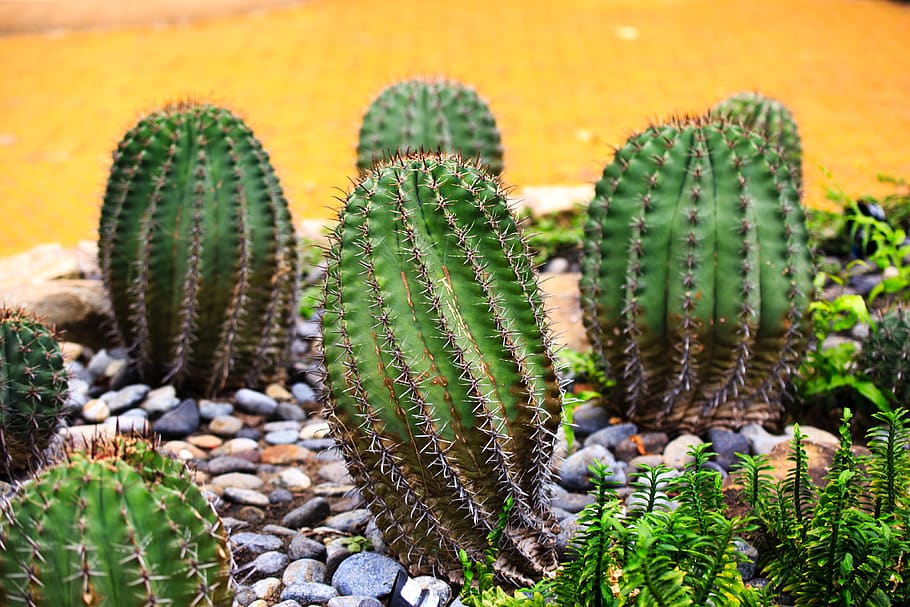Can Cacti Survive Winter?
Cacti are fascinating plants that have adapted to some of the harshest environments on earth. These spiny succulents are found throughout arid regions of North and South America and are an important part of these ecosystems.
With their unique features, cacti have become popular among gardeners and collectors alike. However, one question that often arises is whether can cacti can survive winter?
Definition of Cacti
Cacti, also known as cactus plants, belong to the family Cactaceae. They are characterized by their succulent stems that store water for long periods of time, allowing them to survive in hot and dry environments where other plants struggle to grow. Cactus stems also have a unique feature called areoles, which produce spines or thorns that provide protection against predators and excessive heat or cold.
There are over 1,500 species of cacti found across North and South America, ranging from small button-sized specimens to large towering giants. Some species grow low on the ground while others can reach up to 60 feet in height.
Importance of Cacti in the Ecosystem
Cacti play an important role in their native ecosystems by providing food and shelter for a variety of animals such as birds, insects, reptiles and mammals. The nectar from cactus flowers attracts pollinators such as bees and butterflies while birds feed on fruits produced by some cactus species.
In addition to being a source of food for animals, parts of the plant itself have been used medicinally by indigenous people for centuries. Furthermore, cactus plants help prevent soil erosion by anchoring themselves firmly into the ground with their deep root systems which also prevent flash floods during heavy rainfall events.
Can Cacti Survive Winter?:Overview of the Topic
Winter can be a challenging season for cacti, as they are exposed to extremely cold temperatures and low humidity levels. In this article, we will look at the unique adaptations that cacti have developed to survive winter, as well as the factors that can affect their survival during this period. We will also explore some tips on how to help your cactus survive the winter season.
Types of Cacti
Cacti are a diverse group of plants known for their ability to survive in some of the harshest environments on earth. There are over 2,000 species of cacti, each with unique characteristics and adaptations. While most people associate cacti with deserts, they can also be found in forests, grasslands, and even on mountainsides.
Desert Cacti
Desert cacti are the most well-known type of cactus and are often depicted in movies and cartoons as the stereotypical image of a cactus. These types of cacti have adapted to life in arid environments by developing long taproots that extend deep into the soil to reach the water.
Their stems are thick and fleshy, allowing them to store water during periods of drought. Some common types of desert cacti include the saguaro (Carnegiea gigantea), which can live for over 200 years and grow up to 40 feet tall; the barrel cactus (Echinocactus grusonii), which has a round shape and often grows in clusters; and the prickly pear (Opuntia spp.), which is recognizable by its flat pads covered in spines.
Forest Cacti
While forest cacti may not be as well-known as their desert counterparts, they are just as fascinating. Forest cacti have adapted to life in shaded areas with higher humidity levels than deserts. They typically have thinner stems than desert cacti but still store water for times when it is scarce.
One type of forest cactus is Rhipsalis baccifera, also known as mistletoe cactus or spaghetti cactus. It has thin, trailing stems that can grow up to 6 feet long and produce small white flowers.
Another type is the Christmas cactus (Schlumbergera spp.), which is popular as a houseplant during the holiday season. It has flat, leaf-like stems that produce bright red or pink flowers in the winter.
Can Cacti Survive Winter?:Adaptations for Winter Survival
Cacti are known for their survival skills in harsh desert environments, but they are also able to adapt to cold winter temperatures. These plants have developed unique adaptations that allow them to survive even when temperatures drop below freezing.
Water Storage
One of the most important adaptations cacti use to survive the winter is water storage. Cacti have thick stems and leaves that allow them to store water during periods of high rainfall so that they can survive long periods of drought. During the winter months, cacti reduce their water intake and rely on stored water reserves instead.
This is particularly important since frozen soil makes it difficult for desert plants to absorb any moisture from the ground. Cacti also have special root systems that allow them to absorb as much water as possible during rain or snowfall events.
Their shallow roots are specifically adapted to absorb large quantities of water quickly before it evaporates or sinks too deep into the ground. This stored water provides a necessary cushion against the desiccating effects of low humidity, dry air, and high winds that typically accompany cold weather events.
Insulation
Another way in which cacti are able to survive the winter is through insulation. Just like we put on layers during cold weather, cactus plants grow spines, scales, and hairs on their stems and leaves which help trap a layer of warm air around themselves. This layer acts as an insulating blanket protecting them from freezing temperatures.
The thicker composition of their stem and leaves also helps provide insulation against extreme temperatures by slowing down the heat loss from the plant’s internal tissues. Some species even change color in response to temperature changes – turning darker in cooler weather months so they can absorb more sunlight and stay warmer.
Dormancy
Some species go dormant during colder months just like a hibernating animal. Dormancy is a state of reduced metabolic activity in which the plant conserves energy by slowing down growth and minimizing water loss. During dormancy, cacti stop growing new tissue and simply rely on the stored nutrients and water reserves they have accumulated throughout the year.
They do not produce any flowers or fruits during this period as all their energy is directed towards survival. This adaptation allows them to conserve resources and survive until spring when the warmer temperatures return, and they can resume their normal growth activities again.
Factors that Affect Winter Survival
Cacti are hardy plants adapted to survive in arid environments. However, when winter strikes, it can be a challenging time for the plant as it has to endure cold temperatures and dry air. The ability of cacti to survive winter is dependent on various factors such as temperature, humidity, and soil type.
Temperature
Temperature is one of the key factors that affect cactus survival during winter. Cacti are adapted to living in hot and arid environments, making them susceptible to frost damage when temperatures drop below freezing point. When exposed to low temperatures for prolonged periods, cacti can suffer from freeze damage that manifests itself as blackened areas on the plant’s surface.
The severity of this damage depends on how long the plant is exposed to freezing conditions. To minimize the risk of freeze damage during winter, it is advisable to move your cactus indoors or cover it with a protective material such as burlap or frost cloth.
You can also create a microclimate around your cactus by placing rocks or mulch around its base. These materials absorb heat during the day and release it at night, creating a warm environment for your plant.
Humidity
Humidity is another critical factor that affects cactus survival during winter. Cacti prefer dry air and cannot tolerate high levels of moisture in the atmosphere. During winter, indoor heating systems can cause dry air which can lead to the desiccation of your cactus.
To keep humidity levels optimal for your cactus during winter, you can place a tray filled with pebbles and water under your pot or use a humidifier in the room where you keep your plant. You should also avoid overwatering your cactus as this increases moisture levels in the soil which can cause root rot.
Soil Type
Soil type is also a critical factor that affects cactus survival during winter. Cacti are adapted to grow in well-draining soil, and waterlogged soil can cause root rot, which can be fatal for your plant. During winter, soil moisture levels can increase due to rain or snowfall.
To prevent waterlogging during winter, ensure that your cactus is planted in a well-draining soil mix that allows excess water to drain away from the roots. You can also add a layer of gravel or sand on top of the soil to improve drainage and prevent snow or rainwater from accumulating around the base of your cactus.
Understanding these factors that affect cactus survival during winter can help you prepare your plant for cold temperatures and ensure its continued growth and health. With proper care, your cactus will thrive even in the harshest of winter environments.
Can Cacti Survive Winter?:How to Help Your Cactus Survive the Winter
Watering and Fertilizing
Cacti are adapted to survive in arid environments, where rainfall is scarce. During winter, it is important to reduce the watering frequency as the plant’s growth has slowed down, and they do not need as much water as they would during the growing season.
Overwatering can cause root rot and other fungal diseases that can kill your cactus. To prevent this, you should only water your cactus when the soil is completely dry.
The fertilizer application will depend on the type of cactus you have. Generally, it is best to avoid fertilizing your cactus during winter when it is dormant.
Applying fertilizer during dormancy may cause damage or even kill your cactus. It’s better to wait until spring when your cactus starts showing signs of growth.
Pruning and Cleaning
Cleaning and pruning are essential practices for maintaining healthy cacti during winter. By cleaning up the dried-up leaves or debris around your plant, you can minimize pest infestation and disease spread that may arise from dead plant material.
You can also consider pruning damaged or diseased parts of your plant. This helps direct energy towards healthier areas of the plant while reducing areas for pests and diseases to grow.
Covering and Protecting
Covering your cacti can offer significant protection from frost damage that may occur during winter. A simple solution would be using a frost blanket or a plastic cover to protect against cold winds at night.
If you live in an area with heavy snowfall, it might be necessary to construct a temporary greenhouse-type structure around your plants with clear plastic sheets held up by stakes in each corner fenced off with chicken wire to keep animals away. This will help trap heat and protect the plants from snow and ice damage.
Conclusion
Cacti are fascinating plants that have evolved to survive in harsh desert environments. During the winter months, cacti face numerous challenges that can threaten their survival.
However, with their unique adaptations such as water storage, insulation and dormancy, many species of cactus are able to survive the colder temperatures. It is important to preserve these plants not only for their aesthetic value but also for their ecological significance.
Cacti provide habitat and food for numerous animal species, including birds and insects. Furthermore, they play a crucial role in preventing soil erosion and maintaining biodiversity in arid regions.
As research on the survival of cacti during winter continues to expand, there is hope for an even greater understanding of these extraordinary plants. With careful management practices and continued protection efforts from concerned individuals like ourselves, we can help ensure that these valuable resources remain available for future generations to appreciate and enjoy.

